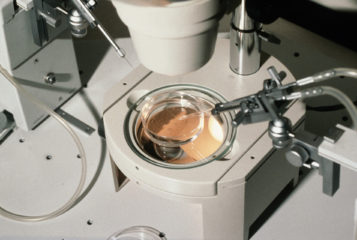The South Australian Supreme Court has granted a woman permission to use her deceased husband's sperm for IVF treatment.
The applicant (whose identity is protected by law) had cryopreserved her late husband's sperm following his death in 2011 in a road accident. Her husband had not provided consent for his sperm to be used in IVF, but the court heard how he intended to have a family with the woman and they were planning a family together prior to his death.
The ruling means the woman will now be able to use the stored sperm for IVF treatment, although not in her home state of South Australia where such a procedure is barred under the Assisted Reproduction Treatment Act 1988. Instead, the applicant will be able to travel to the Australian Capital Territory (ACT) to undergo treatment where there is no specific state legislation regulating assisted reproduction technology.
The order granted by Justice Tom Gray of the South Australian Supreme Court in October 2013, reasons for which were published in December 2013, followed a complex case history. In October 2012 the South Australian Supreme Court granted the applicant prima facie possession of the cryopreserved sperm in IVF treatment. However, before an order could be made the Attorney-General was required to grant an exemption from the conditions set out in the 1988 Act, which would otherwise prevent such treatment in South Australia.
The matter was returned to the court, however, as the deceased's parents had not been consulted on the matter. The application was relisted and heard again but in August 2013 the Minister for Health and Ageing informed the applicant that he did not have the power to vary the conditions under South Australia's 1988 Act. Furthermore, even if he had the power to do so, he would not. The Minister said that to vary the conditions would flout the policy requirement of consent (from the person whose gametes are to be used posthumously).
At the point, the applicant made enquiries as to the possibility of undergoing treatment at the Genea Clinic in ACT, where there is no legislative bar to posthumous assisted reproduction. The deceased's parents did not oppose the application; the Attorney-General neither opposed the application, nor did he give specific consent.
Despite the absence of legislation on the matter, within the ACT the use of assisted reproduction technology is regulated by Reproductive Technology Accreditation Committee of the Fertility Society of Australia which sets practice standards. It requires compliance with the guidelines published by the Australian Government National Health and Medical Research Council.
The guidelines, which have no legislative force, require that 'a deceased person has left clearly expressed and witnessed directions consenting to the use of his or her gametes' (Clause 6.15). Yet, the ambiguity of this clause and how it is to be interpreted presents its own obstacle.
Referring to the reasoning and decisions of two previous cases with similar facts which also required consideration of Clause 6.15 (the Supreme Court of New South Wales' decision in Edwards; Re the estate of the late Mark Edwards (2011) 81 NSWLR 198 and the Victorian Civil and Administrative Tribunal's decision in Re YZ and Infertility Treatment Authority (2005) VAR 1), Justice Gray noted the distinction in status between ethical guidelines and statute. He concluded that he 'was satisfied that the deceased did intend to have a family with the applicant and that that intention was made known to others and was evidenced in writing'.
However, Justice Gray went on to say that 'it remains a question for those providing treatment in the Australian Capital Territory to reach their own conclusion on this topic'. The ultimate decision therefore, rests with the Genea Clinic.
The precedent set in this case is in line with the decision in the case of Edwards, where Jocelyn Edwards was granted ownership of her late husband's sperm (reported in BioNews 609). The decision enables the woman in this case to transport the sperm out of state to another jurisdiction where its use in IVF treatment is not barred.





Leave a Reply
You must be logged in to post a comment.